Manual optimization of Facebook ad campaigns can improve their effectiveness and reduce costs. In this piece, let’s look at the key steps: setting a budget, choosing playsets, and analyzing performance.
Setting up advertising campaign
Starting budget
The first step in setting up a campaign is to determine the starting budget. You can choose one of two options: distribute it manually between ad groups (Ad Set) or set the total budget at the campaign level for automatic distribution.
Ad Set Budget
It is usually set in the amount of 25-35% of the daily limit of the advertising account – the exact percentage depends on the number of planned ad groups.
Example: If the daily limit is $50 and we want to run 3 Ad Sets, we should allocate $15-17 for each.
Campaign Budget
Instead of prescribing amounts for each Ad Set, you can set a single budget at the campaign level, and then Facebook will reallocate funds in favor of those Ad Sets that show the best results.
Example: With a daily limit of $50, you create one campaign with 3 groups of ads inside and set Campaign Budget = $50. The algorithm will automatically determine how to divide this $50 between Ad Sets more efficiently based on your goals (leads, buys, traffic, etc).
About incremental budget increases and different strategies for scaling Facebook campaigns. Read more: https://cpa.rip/en/facebook/scaling-ads/
Placements
Most of the time we leave only mobile devices and disable Audience Network and Messenger. If we use Advantage+ Placements, then at the optimization stage we look at the results and disable the sites that give obviously negative results.
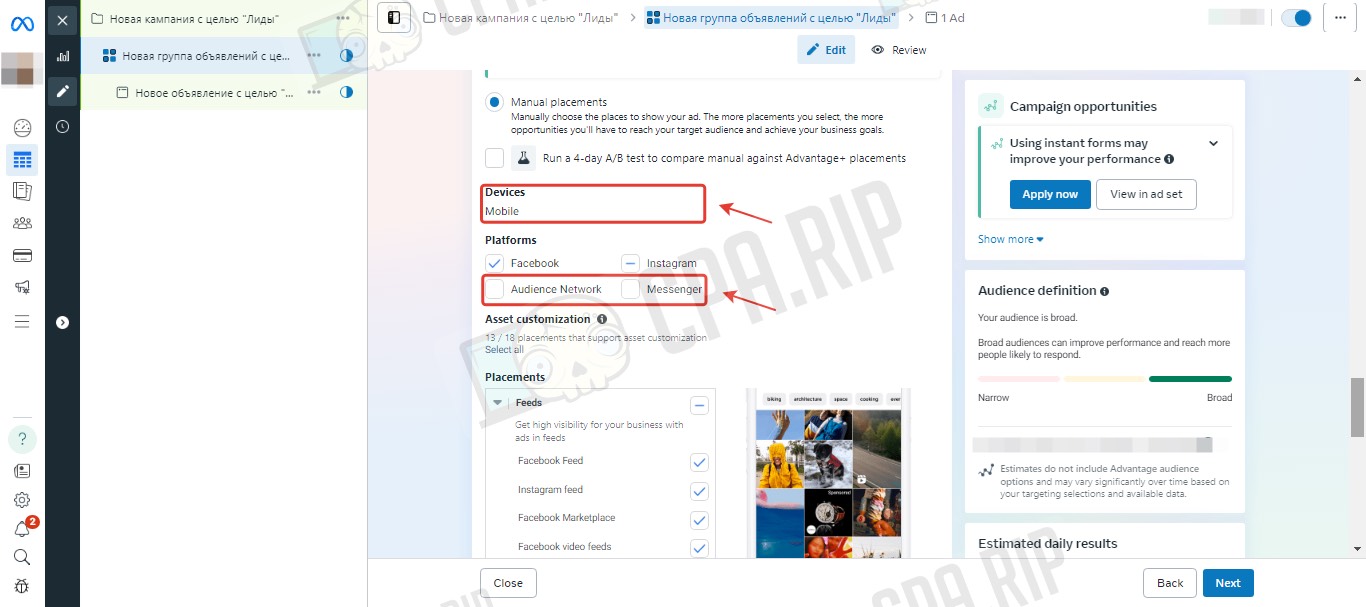
Creatives
Ideally, prepare creatives in two formats: 1:1 and 9:16, then load each format under the appropriate placeholder. If there is only one format for a creative, be sure to check how it looks in the preview.
Example: In the Crop section when adding a creative, click Replace and load the desired variant under the appropriate playset.
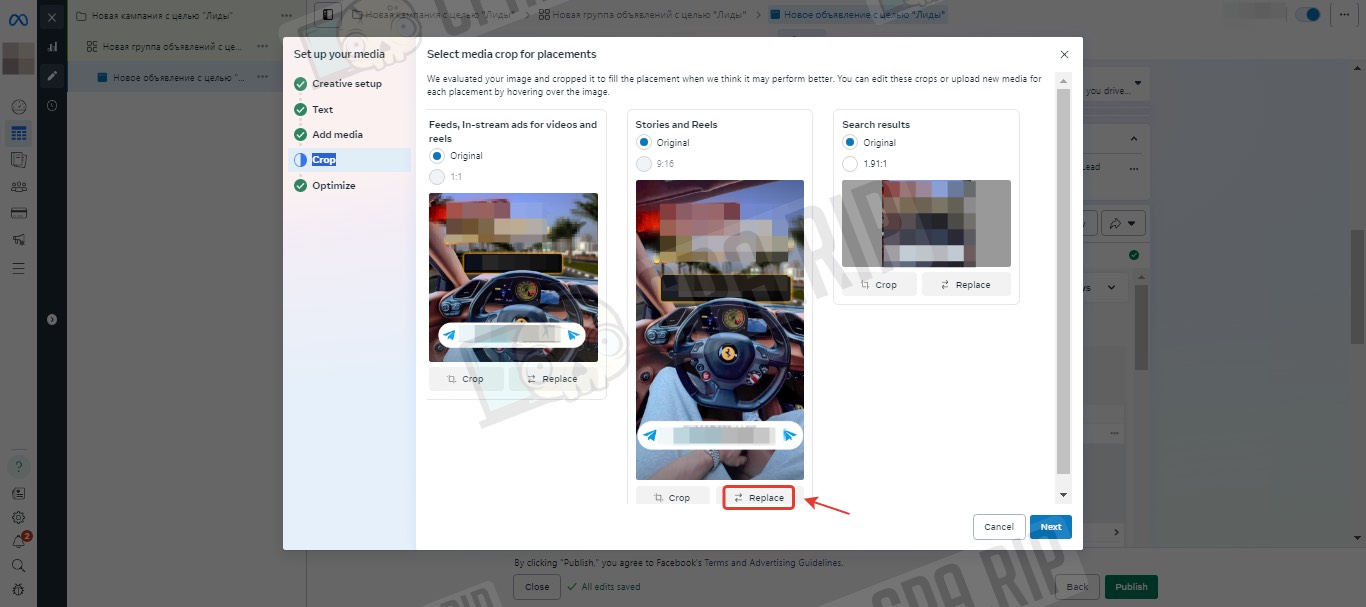
Disabling Ad Set
One of the main ways of manual optimization is to disable ineffective (expensive) ad sets and start new ones.
Secondary disabling is based on the budget spent. In order to determine the budget at which to disable Ad Set use the following methods:
-
Primary disconnection:
We focus on CPM, CPC, and CTR. If they are too high or CTR is too low, Ad Set will be turned off immediately. -
Secondary disconnection:
Rely on the budget spent. We use one of the options to determine the “disconnection threshold”:- Method No. 1. Limit price of a lead × 3.
For example: if target CPL = $10, you need to spend at least $30 on an Ad Set before disabling it.
- Method No. 2: Payout per approved lead.
For example: the payout for an offer is $28, so at least $28 should be spent on Ad Set before deciding on its effectiveness.
- Method No. 1. Limit price of a lead × 3.
Optimization after first launch
By age
Collect primary data, breakdown statistics by age To do this, select a campaign, click, and choose “Breakdown → Age”.
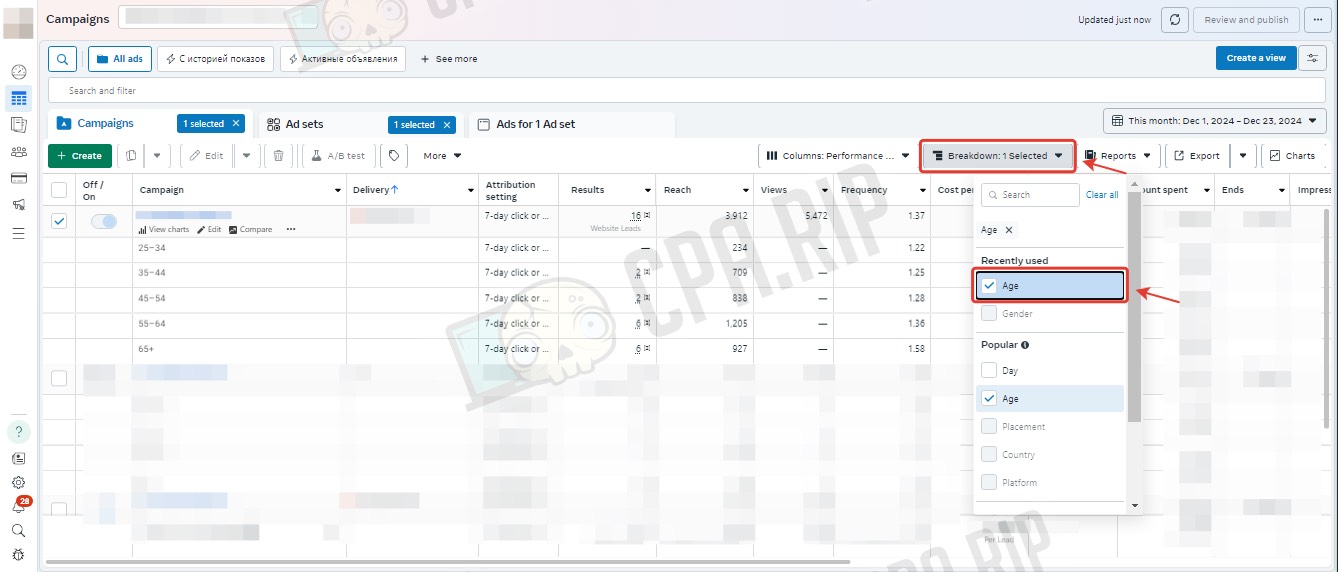
Example: If we see that for example 55+ audience gives 2 times cheaper leads than 25-55, we focus on 55+ in the next campaigns.
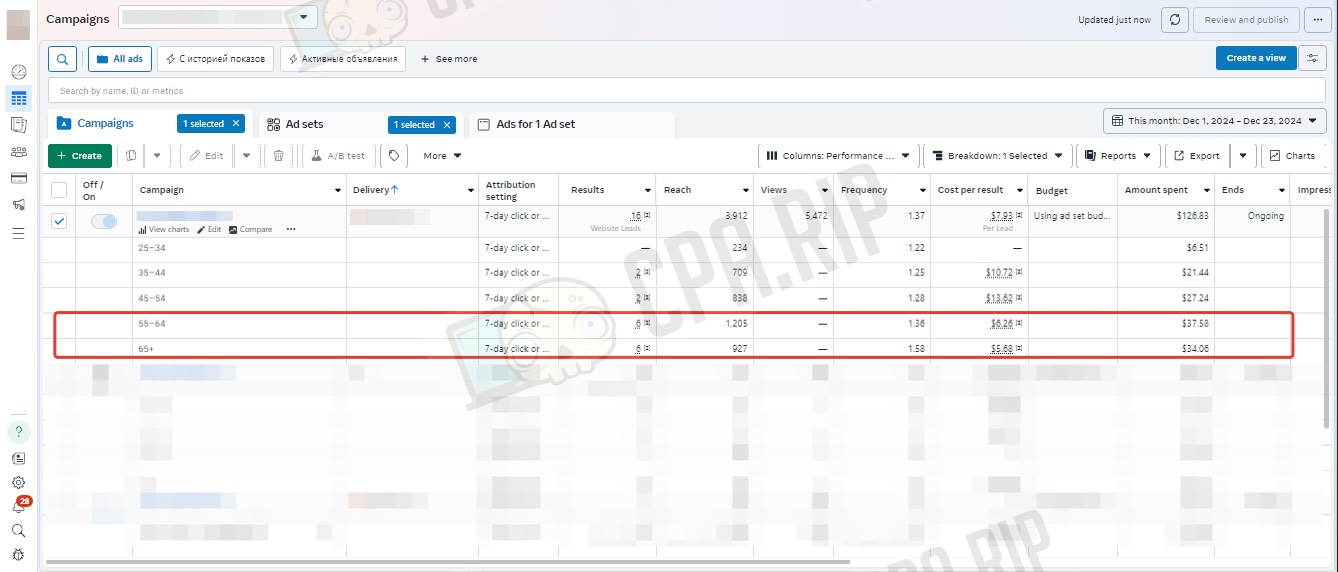
By Placement
Select the campaign, click, and choose “Breakdown → Placement”.
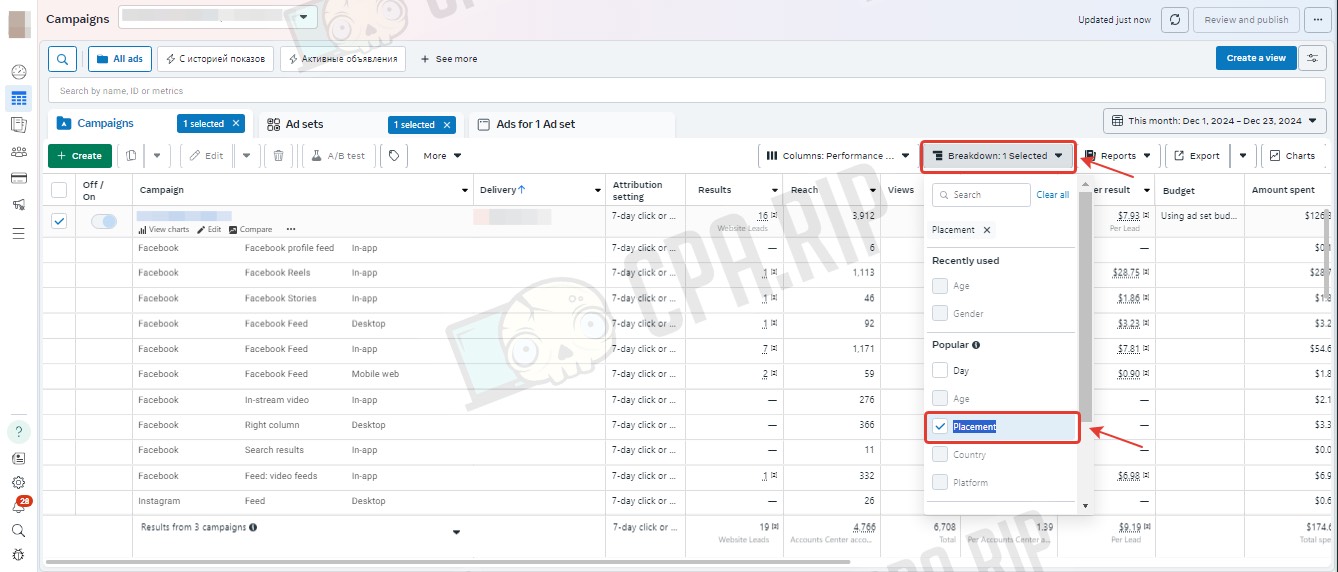
Example: in this example, it makes more sense to look at which placements are worth disabling. These are Facebook Reels, Right column, and Facebook In-stream video.
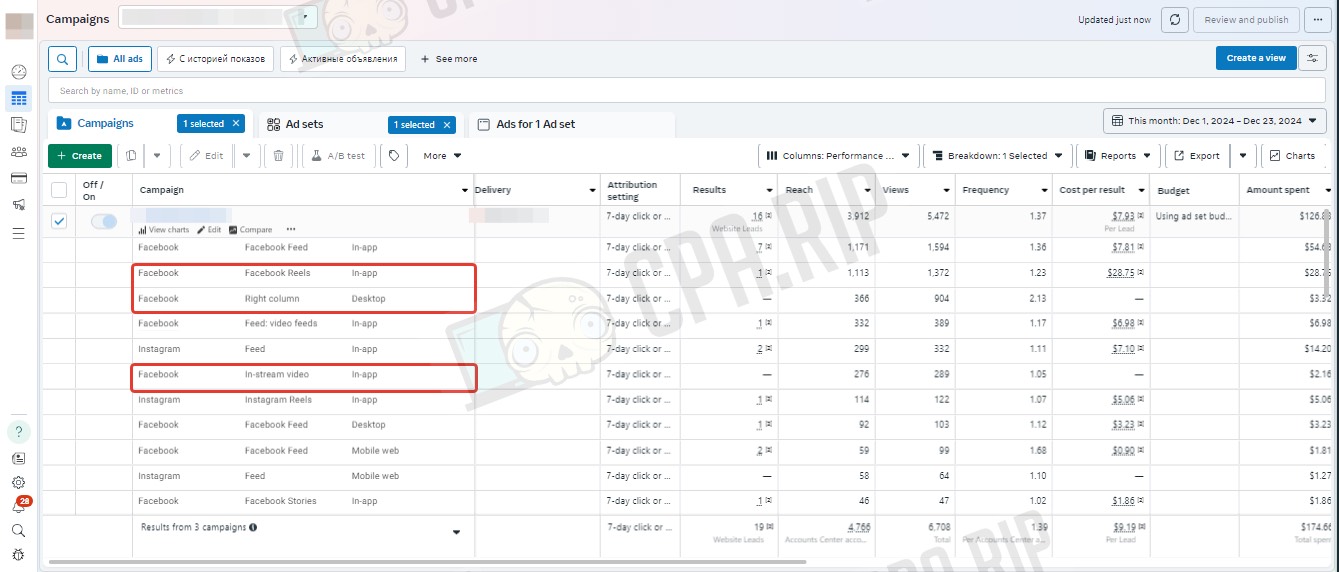
In general, these manual optimization activities make up a significant part of the work when driving traffic from Facebook. Some of these routines can be automated with Facebook auto-rules. Read more: https://cpa.rip/articles/traffic-arbitrage/#Rabota_s_avtopravilami_v_Facebook_Ads













































